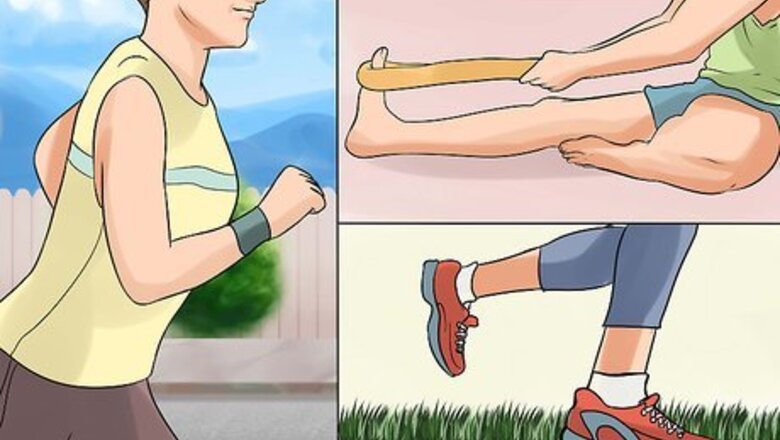
views
Slimming Down Your Ankles

Exercise your legs more. Walking, jogging and cycling are all good exercises that force your lower leg muscles to contract. If you have poor circulation in your legs due to faulty valves in your veins or are overweight, then exercising your lower legs muscles can help your overall blood circulation and weight distribution. If you decide to jog, then run on softer surfaces (such as grass) and wear well-cushioned shoes or else you increase the risk of damaging or spraining your ankles and contributing to your problem. Start with exercises that don't put too much pressure on your ankles and other leg joints, such as swimming or cycling. Stretching your ankles and lower legs may also promote better blood and lymph flow. Fat loss usually occurs from the face and abdomen initially, so be patient for the fat to be burned off from around your ankles.

Lose weight by decreasing your caloric consumption. In addition to cardiovascular exercise, focus on reducing the number of calories you consume on a daily basis. Most people who are relatively sedentary only require about 2,000 calories per day to maintain their body processes and have enough energy for mild levels of exercise. Reducing your calorie intake by 500 calories daily will result in about 4 pounds of fat tissue loss per month. Salads made with leafy greens and fresh vegetables are excellent choices for weight loss because they are low-calorie, high in nutrients and relatively bulky (high in fiber), so they fill up your stomach. Just remember to go easy on the salad dressing. Drinking lots of water is great for weight loss because it's calorie free and helps to curb your appetite.
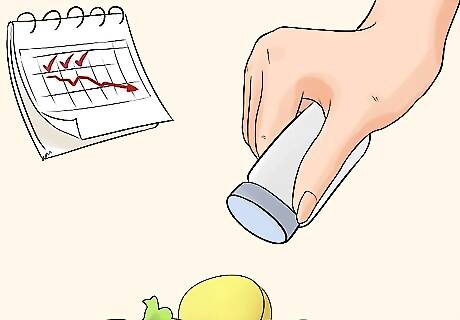
Reduce your dietary salt intake. Diets high in salt tend to make tissues look puffy because the sodium within salt pulls the water from the cells into the surrounding interstitial spaces, creating a type of swelling called edema. The face, hands and feet/ankles are common areas affected by high-salt diets. Most processed foods are high in sodium, so focus more on fresh meats and produce. Canned tomato sauces, salsas, crackers and pickled veggies are particularly high in sodium. Your daily sodium intake should be between 1,500 mg and 2,300 mg. A low-sodium diet recommended by many doctors is called the DASH diet.
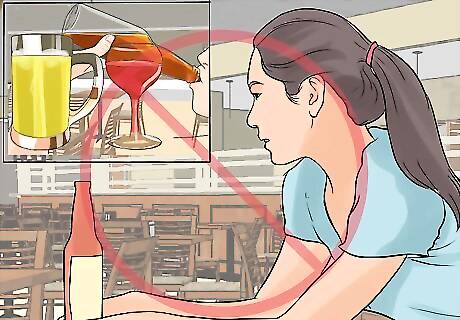
Avoid consuming excessive alcohol, especially beer. Chronic alcohol intake can injury the pancreas and liver because ethanol is relatively toxic. A damaged liver doesn't work properly making enzymes and processing amino acids, which leads to edema (water retention) in the body. Alcohol is also fairly high in sugar-based calories (especially when combined with soda pop) without containing any other nutrients, which promotes weight gain. Beer can be particularly problematic because some brands are also high in sodium. Consider switching to red wine, which is healthier for your blood vessels. Avoid eating the peanuts and pretzels that are served at some bars, as both are very high in salt.

Consider taking blood thinners if you have vascular disease. Fluid accumulation (edema) around the ankles can also be caused by peripheral arterial disease, which occurs when small arteries carrying blood to the legs slowly become narrowed or blocked from plaque accumulation inside the arterial walls -- a disease process called atherosclerosis. Without proper blood flow, the tissues of the foot and ankle don't get enough oxygen and other nutrients and become damaged. With time, the feet and ankles may become inflamed. Taking blood thinners (usually a prescription medication) prevents the plaque build-up in arteries and promotes better blood flow and blood pressure. Commonly recommended blood thinners include aspirin and warfarin (Coumadin). Arterial plaque contains cholesterol, so maintaining a healthy blood cholesterol level may help prevent atherosclerosis.
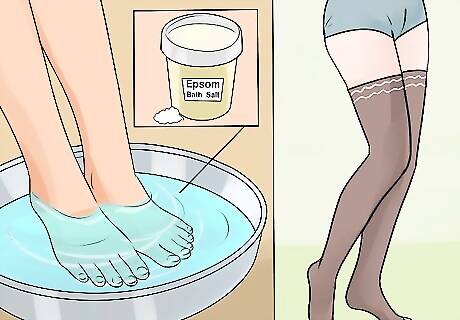
Wear compression stockings to combat vascular disease. Compression stockings are available online, at medical supply stores, or maybe your medical specialist will give some for free if you're diagnosed with a vascular disease. Compression stockings provide support to muscles and blood vessels, which reduces edema / swelling and promotes better circulation. Putting your feet up while resting, watching TV or sitting at the computer will help with blood flow from your legs due to reducing the effect of gravity. Laying down is even better. Soaking your feet and ankles in a warm Epsom salt bath can significantly reduce pain and swelling.
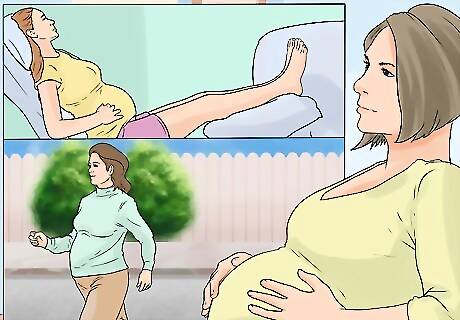
Be patient if you're pregnant. Pregnancy not only involves weight gain that may negatively impact your ankles, but also periods of poor circulation and changes in hormonal levels, which often promotes fluid retention in the lower legs. So if you're worried about your cankles during pregnancy, then you can certainly reduce your sodium intake, but simply wait until you give birth and see if your ankles go back to normal size. Going on moderately paced walks and always raising your legs when you sit will help reduce edema in your ankles while you're pregnant. Realize also that edema can come and go with a woman's menstrual cycle.
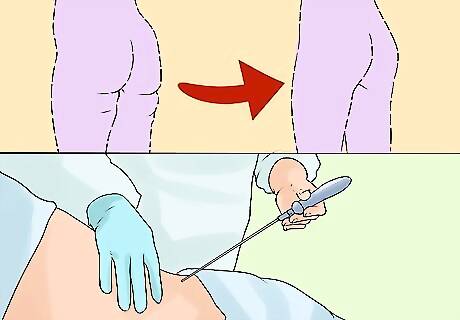
Consider liposuction if you're overweight. If you're having trouble losing the fat deposits around your ankle, then schedule a consultation with a vascular or cosmetic surgeon in order to discuss fat removal via liposuction. Being invasive, surgery should be your last option to combat your cankles, not your first choice because of the potential convenience. In addition to liposuction, the surgeon may be able to shave or remodel the bones and muscles of the lower calf and ankle. Make sure you understand all the risks of undergoing surgery, such as allergic reactions to anesthesia, infections and heavy blood loss.
Dressing to Make Cankles Look Smaller
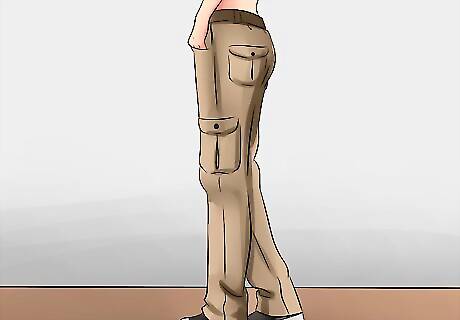
Wear long, wide-legged pants. Long pants will cover your cankles and slim your legs at the same time. Wide-legged styles are best, as these don’t hug your ankles. Try to avoid skinny jeans and cropped styles that cut off right above the ankle. Long dresses and skirts also have a slimming effect. Just make sure they cut off at the ankle, not above it.
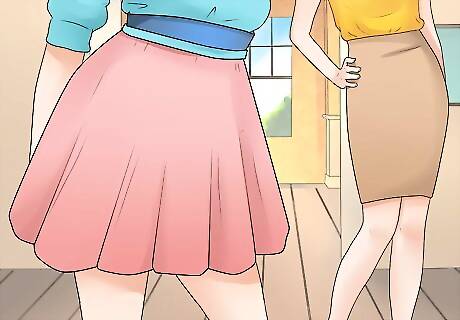
Choose high-waisted bottoms. High-waisted bottoms lengthen your legs, resulting in a slimmer-looking ankle. Try high-waisted pants or a long, high-waisted skirt.
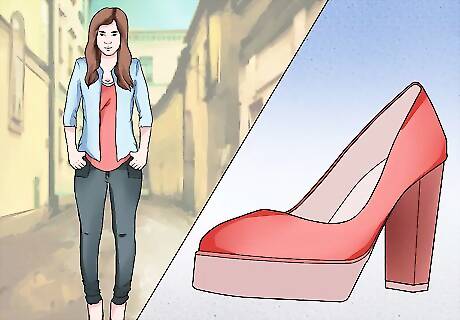
Pick chunky heels. Chunky heels can make large ankles look slimmer. Stay away from stilettos, which are small and thin, making your ankles look larger in comparison.
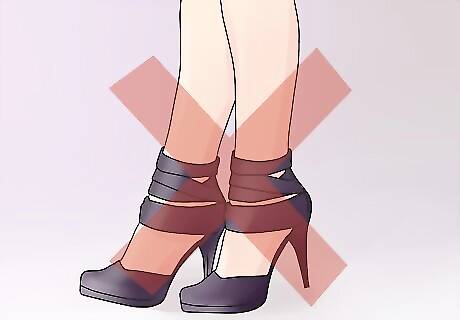
Avoid shoes with ankle straps. Ankle straps will only call attention to your cankles. Instead, pick shoes that cover your ankles, like high boots, or shoes with pointed toes, which help elongate your legs.
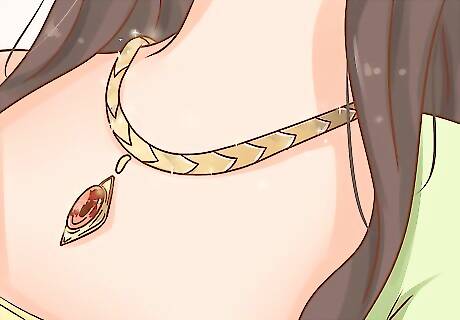
Draw attention elsewhere with accessories. If you don’t want to give up cropped pants or sandals with ankle straps, try accessorizing. Bold accessories, like handbags, sunglasses, and jewelry, will draw eyes upward and away from your cankles.
Determining the Cause
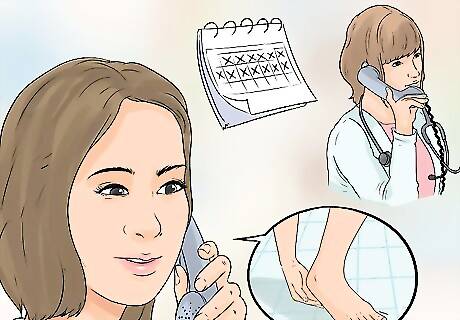
Schedule an appointment with your doctor. If you perceive your ankles to be unusually thick (especially if a sudden change has occurred), then schedule an appointment with your family physician. Your doctor will examine your feet, ankles and legs, ask questions about your family history, diet and lifestyle, and maybe even take your blood pressure or send you for a blood test (to check cholesterol levels). Your doctor will determine if your cankles have a relatively benign cause (such as weight gain or edema from too much dietary salt) or if they are related to a health problem (such as poor circulation or heart disease). However, your family doctor is not a foot or circulatory specialist, so you may need a referral to another doctor with more specialized training. Genetically, some women have naturally larger bones/ankle joints and thicker calf muscles, which cannot be remedied without invasive surgery. Obesity obviously involves fat accumulation around the body, but the face, abdomen, buttocks and thighs are much more common destinations for fat deposit than the ankles.
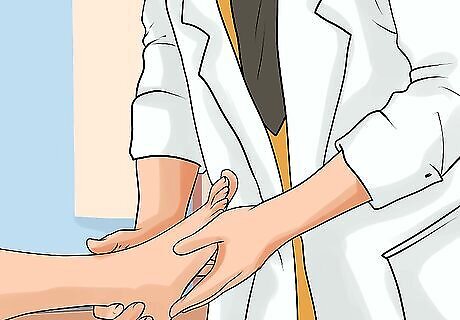
See a specialist about your ankles. If your family doctor thinks your cankles are related to a blood flow problem such as venous insufficiency (a vein condition that causes blood and other fluid to accumulate around the ankle and foot) then you may be referred to a vascular surgeon for a consult. If a hormonal problem is suspected (such as low insulin levels, which is indicative of diabetes), then you may be sent to an endocrinologist. If a heart problem is suspected (such as congestive heart failure), then a cardiologist might be the most appropriate doctor to see and treat your problem. Vascular ultrasound is a painless procedure that allows a doctor to assess the function of the veins and arteries of your lower leg. Podiatrists are foot specialists who may also be helpful in diagnosing ankle problems.
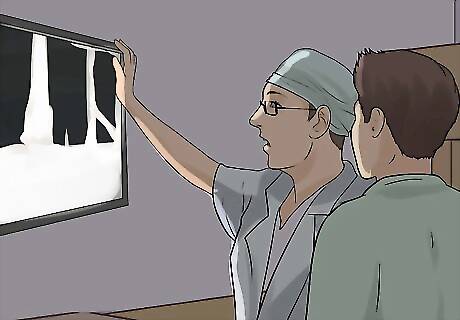
Get an accurate diagnosis and understand the cause. Make sure you get the doctor to clearly explain the diagnosis, especially the cause (if possible), and provide you with various treatment options for your cankles. If it's determined that you have no health issues and your larger-than-normal ankles are simply due to genetics and body type, then focus more on body acceptance and overall health, while being less concerned about something as frivolous as the aesthetics of your ankles. Body shapes and sizes can be changed somewhat, but only within well-defined limits. Muscle fiber types and bone structure are inherited characteristics, so losing weight and working out your leg muscles may have very little impact on your cankles. Research the various causes of thick ankles on the internet. It will give you ideas of potential treatments you can do at home, but always stick to reputable medical/health sites.



















Comments
0 comment